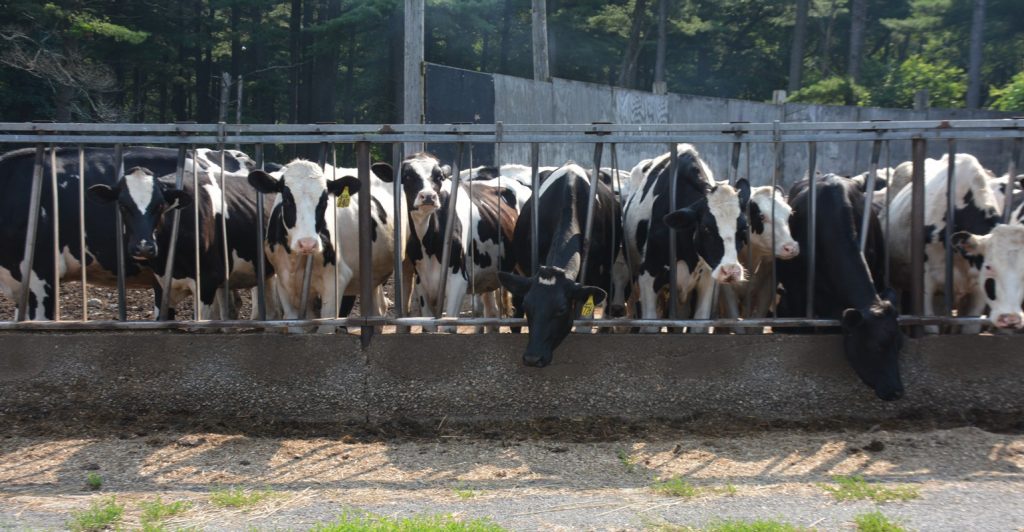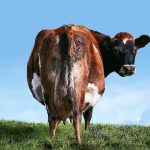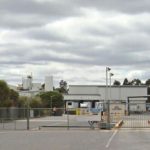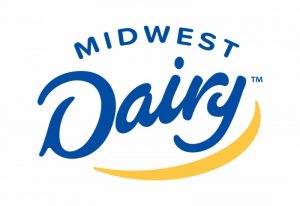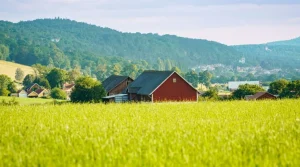
When Sam Staebner got a job as the concession manager for the Worcester Bravehearts — a baseball team near her hometown of Sutton, Mass. — she thought she landed her dream job.
She grew up on her family’s dairy farm, but she always had an interest in food service. Coupled with the fact that the job wasn’t far from home, it seemed like the perfect fit.
But just nine months into it, something changed. A storm came rolling in as she was operating a deep fryer at the ballpark one night. She knew that her family was busy cutting hay. She knew that she was missing the farm.
“The rain was pouring. My mind was like, gee, I hope they got the hay in back home,” she says. “And just in a couple of split seconds I realized, oh my God, my side thoughts about the hay were putting myself and my staff member at risk.”
A few weeks later, she put in her two weeks’ notice. Her parents were the last ones to find out that she wanted to come home to the farm.
“I actually sat in the office waiting for my dad, put my feet up on his desk and totally laid back,” she says. “He came in the office and said, ‘What are you doing?’ I was 22 years old, I was living at his house, doing my other job. So I told him, I quit my job today. And I said to him, you’re going to hire me.”
Luckily, he did. And seven years later, Sam has become a vital member of the farm, the fifth generation of her family to run it.
Dairy roots
The 500-acre Whittier Farms in Sutton has its roots planted in dairy. Drive past the farm, with its large vegetable garden and on-farm store — called The Milk Store — and you’ll see the barns, silos and trenches typical of a small dairy.
“That’s our roots. Our family, even back to my great-grandfather, his brother and his father, they started the farm in dairy,” Sam says.
But like many dairy farms in the Northeast, especially ones near urban areas, diversification has become key to survival. “I think we’ve tried just about everything since,” Sam says.

In the late 1990s, the family opened the on-farm store to diversify and generate more year-round income. Milk from the farm was bottled at a separate facility in nearby Shrewsbury.
In 2008, the farm joined the Cabot Creamery Cooperative.
The farm milks 65 cows — Red and Whites, and Holsteins — but there’s been a bigger focus on beef the past 10 years. Sam says that it all started one day when they took a cow, bred it to an Angus and got a freezer full of beef.
Since they have a certified kitchen in the store, they decided to try making things that could appeal to their customers, such as homemade meatballs. Apparently, the meatballs were tasty, and they were a hit. Sam and her family have slowly transitioned more of the animals to beef, but dairy is still key.
“We balance our dairy and our beef very, very closely,” she says. Between all the farm’s young stock, there are more than 200 beef and dairy animals. More than 400 acres of corn and grass are grown as feed.
The farm also grows a lot more vegetables — 15 acres of sweet corn, pumpkins, tomatoes and other veggies — and even some fruit.
Finding her niche
When Sam returned to the farm, social media was just starting to take off. Most of the farm’s advertising, and outreach, was through print media.
Sam took the reins and decided to steer the farm toward more online outreach.
“I kind of took the role of, OK, Whittier Farms has to get back out there,” she says. “My role here is to support everything that we’re doing while also reaching out to the public and letting them know that we’re more than just dairy cows.”
The farm is active on Facebook and Instagram, as social media has become a great tool for Sam’s outreach efforts. A 2019 neighborhood potluck attracted hundreds of locals.
“I think coming back we had a big focus of, hey, we’re still here, we’re still your neighbors, and showing people how well we care for our land and our animals is always an important part of that conversation,” she says. “This can go a long way, especially with people nearby. Outreach is important.”

But it’s also put a target on their backs. Three years ago, the farm was targeted by dairy activists who overran the farm’s digital event booking system for a planned open house and farm tour.
Sam says the group, started by a local member of the community, posted memes and spread misinformation about the farm and its animal care practices. It got so bad, she says, that the event had to be scaled back to just a small farm tour.
The farm lucked out, though, as a big storm forced the tour’s cancellation.
This is the trade-off of being active on social media — becoming a target for people who have an anti-farming agenda.
“You just have to be alert. Social media is its own ballgame, and you just deal with it,” Sam says.
COVID refocus
The ongoing pandemic forced the farm to cancel all its off-farm activities, but Sam says that it’s also helped to refocus her family on the basics.
“We realized through COVID that we needed to focus on farming, we needed to focus on our production. We were kind of straying from that a little bit through our catering and off-farm events,” she says. “We just said, wait a minute, let’s just get back to our roots here.”
Three years ago, the farm sold 90 cows. It was a purely financial decision, Sam says, as they didn’t have enough feed to get through that winter because of a wet fall. Now, Sam says the farm is rebuilding and refocusing on herd health and feed quality.

And that all starts with good storage in trenches.
“When we’re covering the trench pile, that plastic is tight. There’s no holes. Do it right the first time,” Sam says. “We’re trying not to lose stuff, no waste. If we have to make dry hay, we put away good dry hay.”
The animals are housed in the same freestall barn, no segregation. The market for their beef is well-established now, she says, so the focus is on getting the dairy steers to weight more efficiently and timely.
Sam, who is pregnant is expecting her first child later this year, doesn’t intend to be the last generation to run her family’s farm. Whatever challenges or changes await, she says, farming now comes first.
“The future of Whittier Farms is in our roots. We’re here to keep ag alive and well,” she says. “Come hell or high water, we’re going to make sure we’re focused on farming.”
